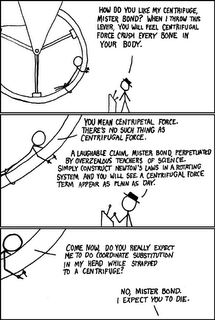Rationale behind the course:
1.) Image
2.) Aesthetic
3.) Allusion...
Aspects of Modernism -
* The "reality effect" - Flaubert's barometer (Flaubertian grotesque = extraneous detail)
Is reality problematic?
Significance -> Incorporation...
[Particularity]
* The "conspiracy of detail" (orchestration)
The effects upon the perceiving mind...
- "the very atmosphere of the mind" (Joyce)
(Think back to 'Dubliners' -> luminous detail, but it's organised so well that it can build to a crescendo of feeling. If I read it quickly.)
* The significant detail
- detail grounded in particularity
- relationship in the objective world//subjective world. (The wading girl from 'Portrait'
- the method of epiphany -> "The Dead", "The Jilting of Granny Weatherall". [The mind as the mediating agent]
* The "proustian moment" (Madeleine) <- Involuntary memory
- the Japanese flower (blossoming suddenly, luminosity, radition)
** The IMAGE (Pound)
- That which presents an emotional and intellectual complex in an instant of time... (not a "moment" of time...)
(complex -> "The Library of Babel"...)
- Therefore, _freedom_ from the limits of time and space. Big thoughts here...
[Sudden illumination, the moment]
- Think - the lowest moment of conscious awaremess, the "duree" // "specious present"
-quantification of consciousness...-
[the currency of modernism is the currency of the image]
* Spatial form (Joseph Frank)
- relationship of New Criticism : Modernism
- the challenge to narrative
- the role of the ANALOGY
=>so, how to reconcile NARRATIVE/ANALOGY?
1.) Narration unfolding in time, sequence of events, linear, etc. Think A to B to C to D etc...
2.) Modernism challenges this - spatialisation. Think A and B and C to D, or A to B and C and D etc...
- so, with spatialisation, moments are orchestrated, given a poetic quality.
- [A moment that transcends time... cf 'The Sound and The Fury' - Quentin's suicide: freeze time, make it permanent. Romantic ethos. Makes me think of Wordsworth's "Spots of time", of the idea of "Transcendence without God" from ENGL319 last year.]
* The Stream of Conciousness
- the dynamics of the image in the mind
- Bergsonian time (Chronology Vs Duration)
- Woolf's "modern fiction"
- the method of SoC...
- the problem of Form and Fluidity
[come back to this. cf Analog/Digital, Continuous/Discrete data, Ideas/Words]...
* The relationshiop of poetry and prose
- Flaubert: that prose should be as well-written as poetry.
- Pound: (in response) that poetry should be as well-written as prose. So there.
- Edmund Wilson ("Axel's Castle" essays): that the distinction between the two has become (in the C20th) increasingly meaningless.
- the apprehension of form in the art of reading (!) Is it too critical to assume that all writing should be good, better than good, should be luminous? cf Paul Valery's "The Role of Thought in Poetry"
- the above makes me think of Joyce's comments that the heroic and glorious stories were adequately serviced by the newspapers, for the common man. Which is why he turned to the commonplace, and the luminous details within.
* Oscar Wilde, "The Decay of Lying"
- the contention that Art is superior to Nature (challenge to Realism). Note use of Capital Letters for Big Ideas... Of course.
- 'Hamlet', and the mirror held up to Nature
- the paradox of Life as an immitation of Art cf the old "Art imitates Life"...
- that bad art comes from returning to Life and Nature
- think London fogs and impressionists. That the fogs didn't exist before then, in the collective consciousness.
[Conclusions below]
That: Art for Art's sake is extreme, but: - the aesthetic effect, the "splendid insincerity of art" (Nabokov), the freedom of form. These are all wonderful things.
Art is carte blanche. It is freedom, it is the ability to be free, to show the imagination...
Narrative moving from the world without to the world within - the concsiouness of the form coexisting with narrative.
The idea of writing poetry and fiction as artistic rather than moralistic.
[Also, remember the variety of form...]
Modernism: supercedes realism's function by incorporating it into itself? Realism is still valid, but what does Modernism add, if not to say that all forms and functions can be valid if used appropriately?
I think, at this stage (admittedly early in the year) that it is the appropriate use of form that is key - form must clearly be used with skill, and skill defies quantitative judgements. Or does it? Am I being too snobbish here? I'll find out.





